| ebailey140 ( @ 2009-03-17 06:34:00 |
|
|
|||
|
|
|
|
|
|
|
| Current music: | Brian Eno - "Deep Blue Day" |
Gotham City Sirens, Who They Are and How They Came To Be, Part 1: Poison Ivy
With the upcoming series starring Gotham's three most prominant bad girls, I figured I'd spotlight each of them in current DCU continuity, their origins, motivations, what they have in common and what sets them apart. We'll start with everyone's favorite psychotic eco-terrorist, Dr. Pamela Isley, aka Poison Ivy.
Poison Ivy was introduced during the Silver Age, and was typical of the gimmick villains of the time. Her original origin was she was a botanist who assisted Marc LeGrande in stealing ancient Egyptian poisonous herbs. He attempted to kill her with them, but she survived and discovered she was immune to all poisons and diseases. She was a femme fatale with a plant theme.
After Crisis of Infinite Earths, many characters and series had their continuity rebooted or revamped. In Ivy's case, the revamping for the new era was done by a then up and coming writer named Neil Gaiman.
Needless to say, the result was a more complex, not to mention much darker, Poison Ivy.
The post-Crisis Ivy was introduced, strangely enough, somewhere other than a Batman book. It was a mini-series reviving a Bronze Age character, Black Orchid, written by Gaiman and drawn by Dave McKean. It starts with the death of the title character... sort of. Her "sister", a human/plant hybrid, gains awareness, with bits of memory of a woman named Susan Linden. Her quest for identity leads her to a scientist, Dr. Philip Sylvian. He tells her about himself; Susan Linden, the late love of his life; and a group of idealistic students he was a part of who planned to save the world, and their Professor.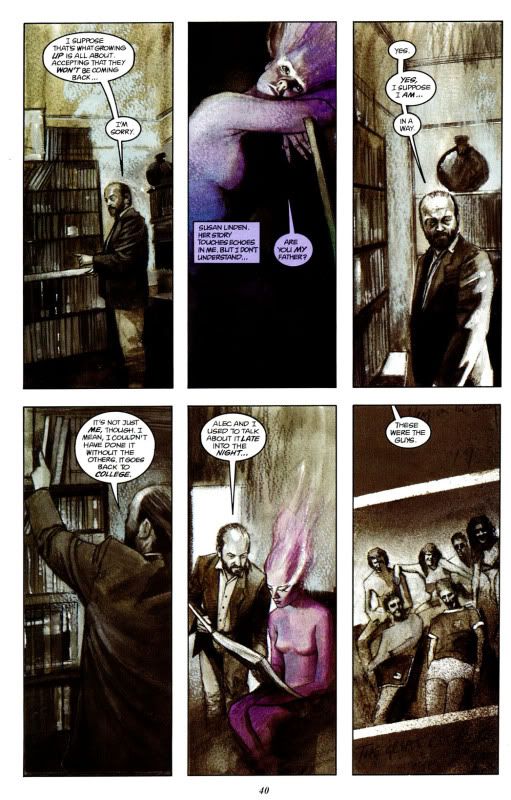
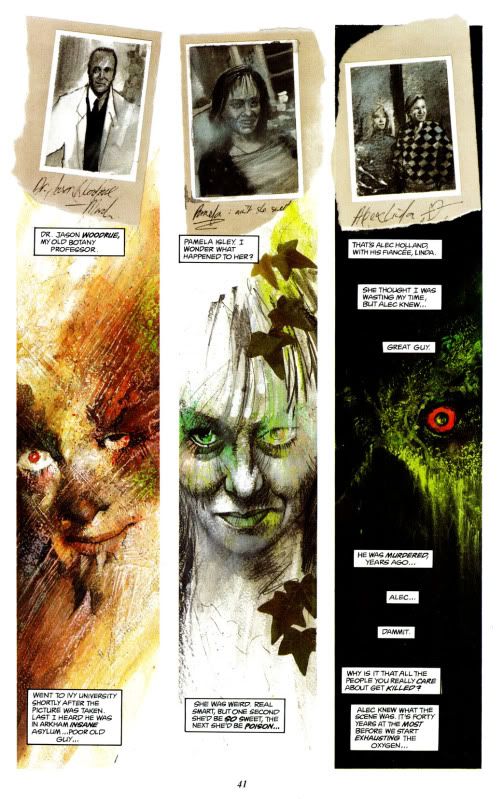
She leaves for a while to think over things, but when she returns, she finds Sylvian has been murdered, and his lab destroyed, as well as all of her "sisters," except one, a child version of herself.
Still needing answers, she goes to Gotham, hoping to speak to Woodrue, now known as the Floronic Man, and Dr. Isley, who was last reported in that city. She leanrs that Woodrue is no longer in Arkham, so she searches the city for Pam.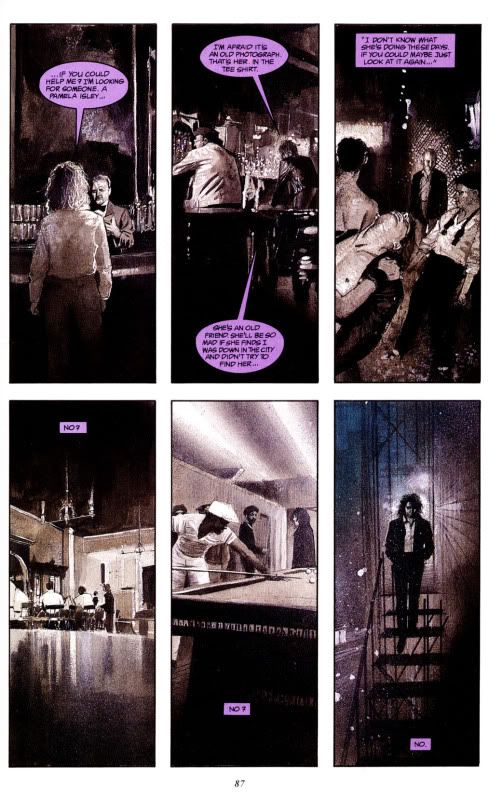
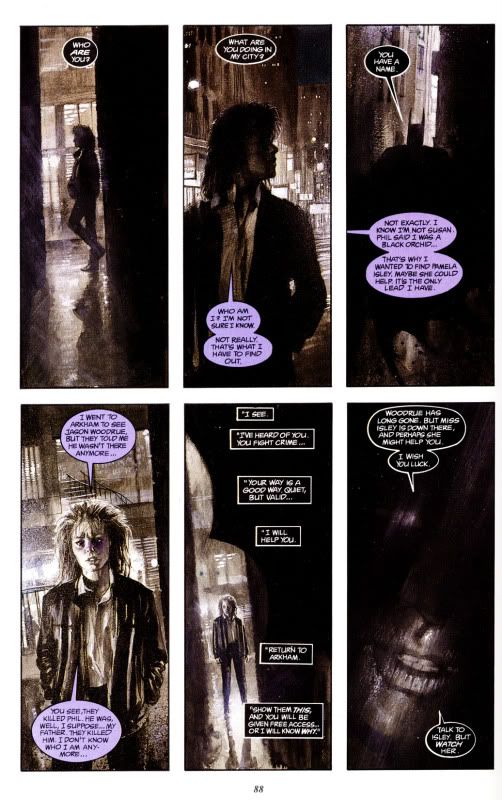
And so, we get our first look at Dave McKean's Arkham, a year before Morrison's Arkham Asylum.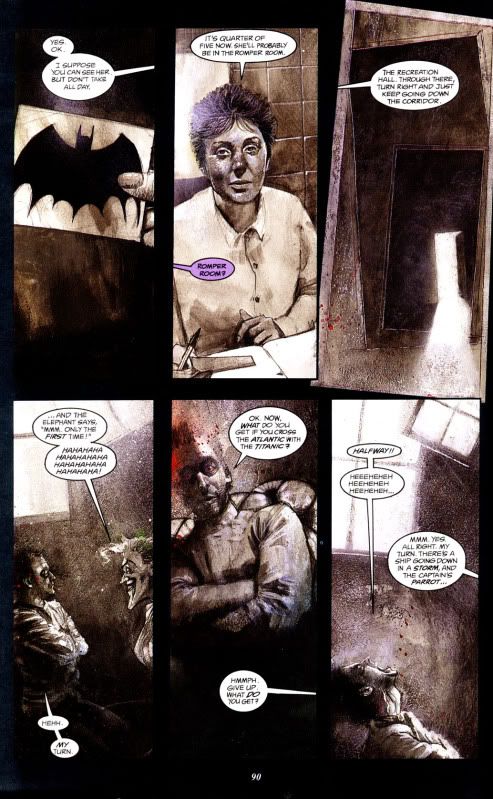
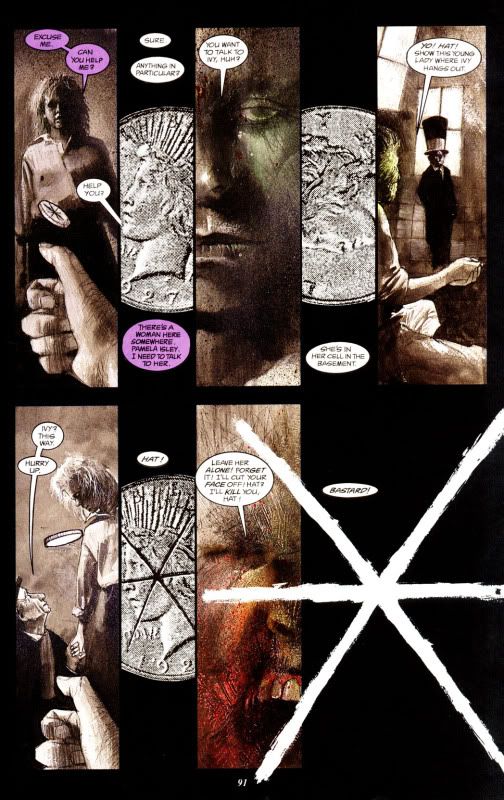
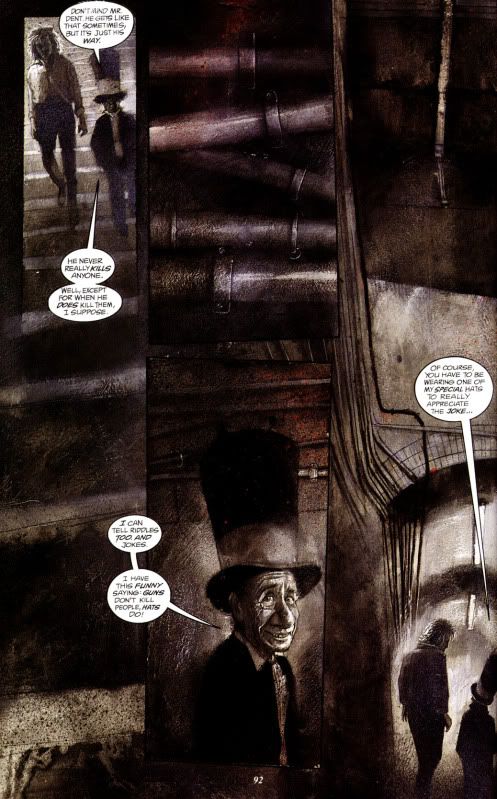
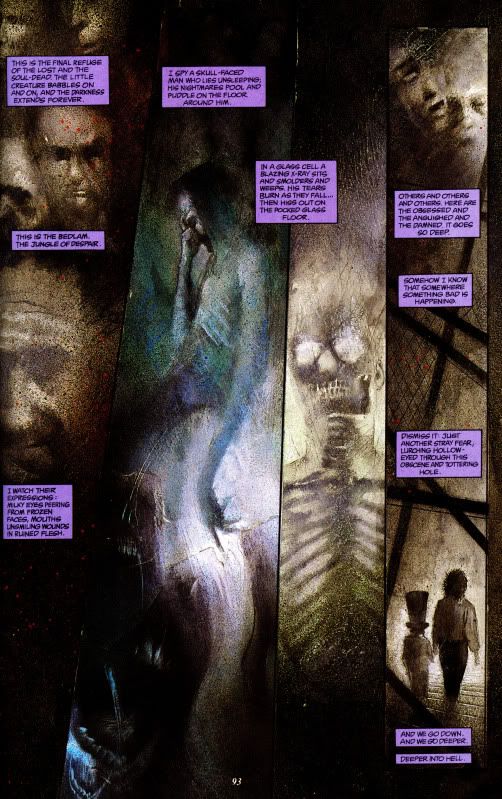
Nicely mythic, Gaiman's descriptions, here. If all that is what's above, what is lurking below?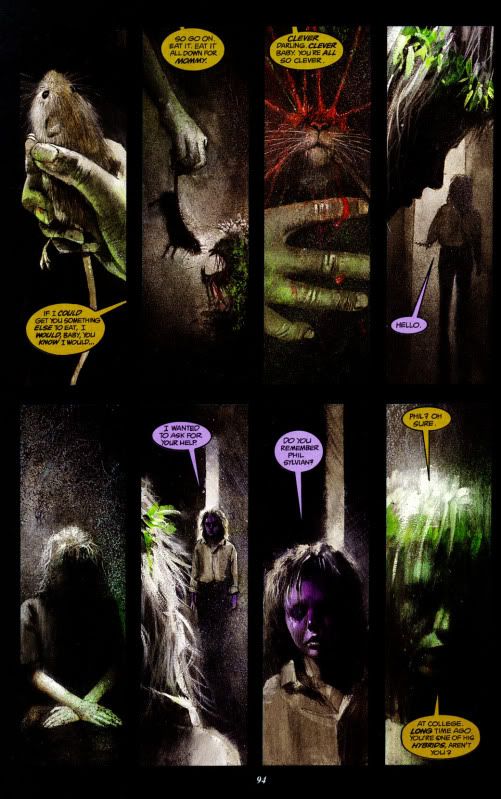
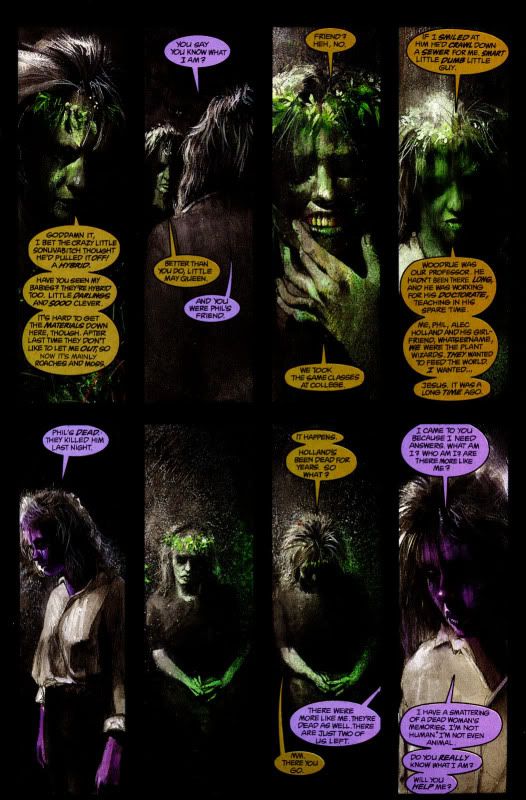
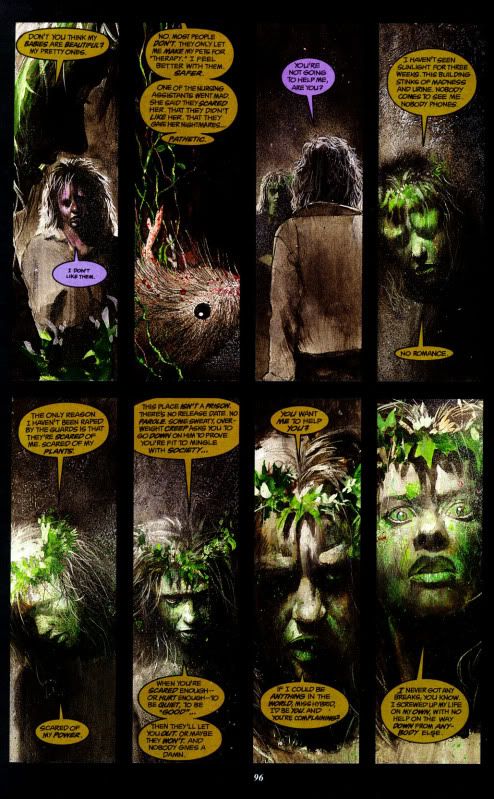
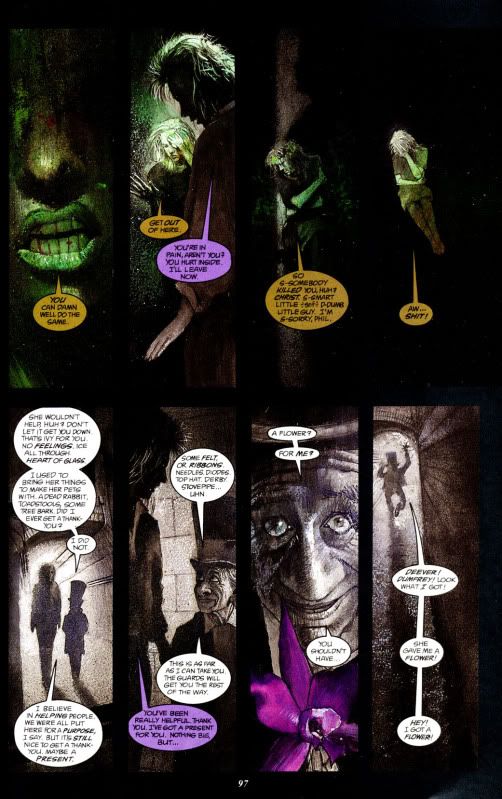

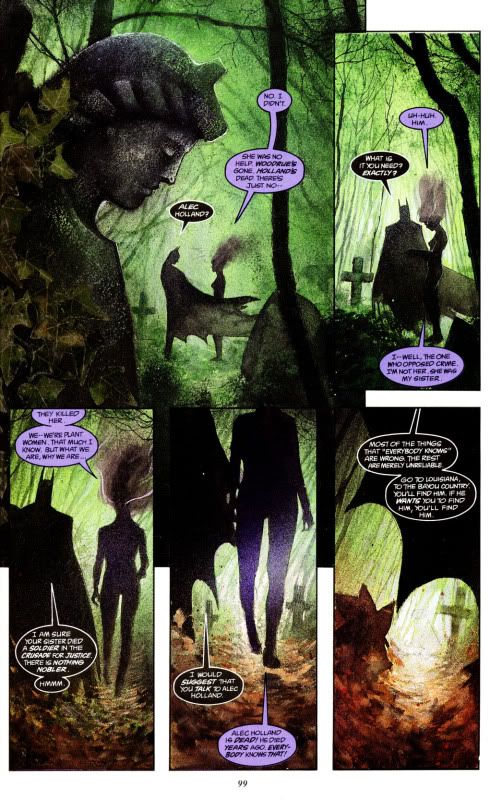
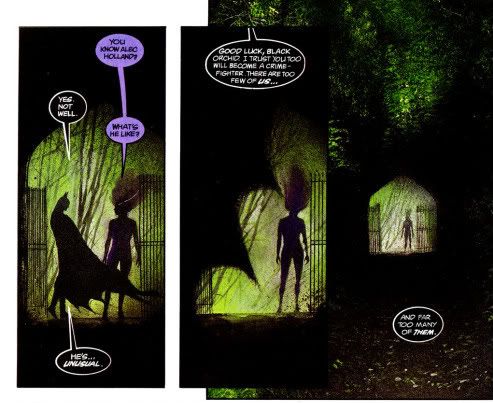
So, she finds Alec, and learns of the Green, and the nature of the elementals who were once human.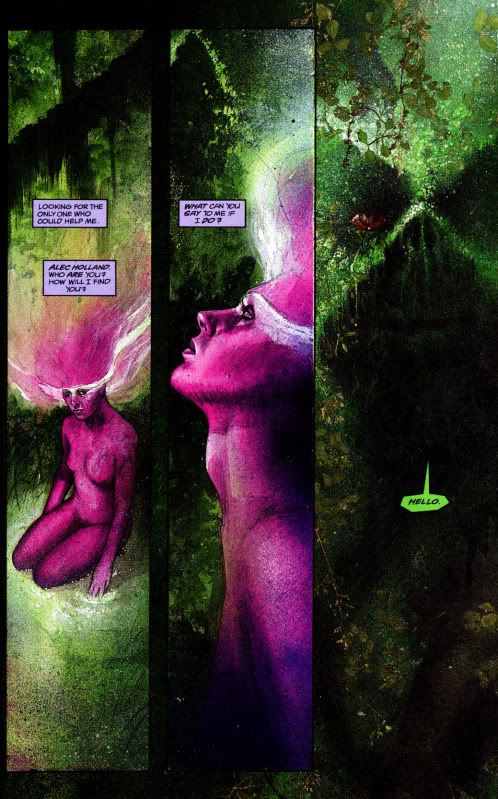
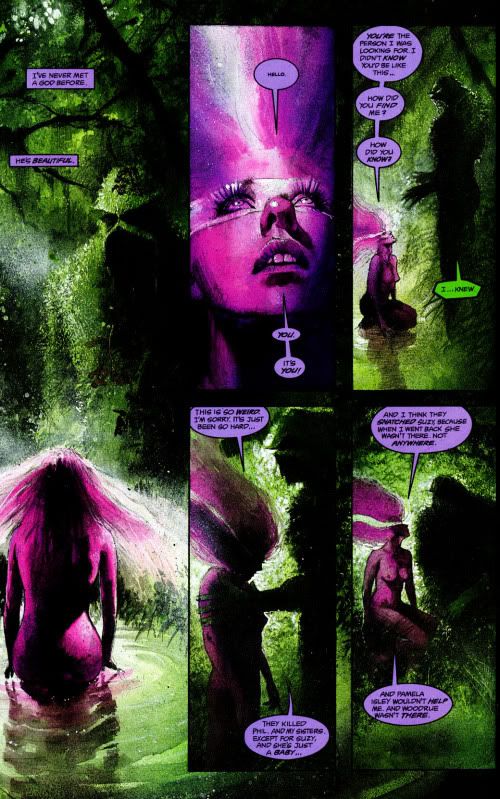
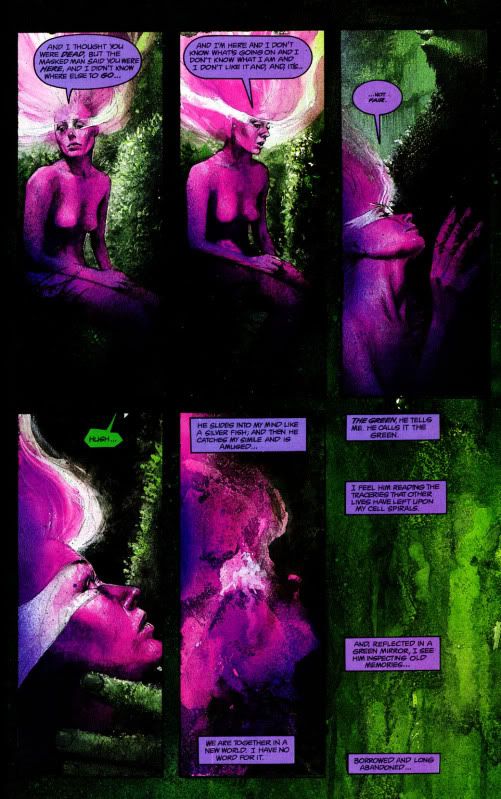
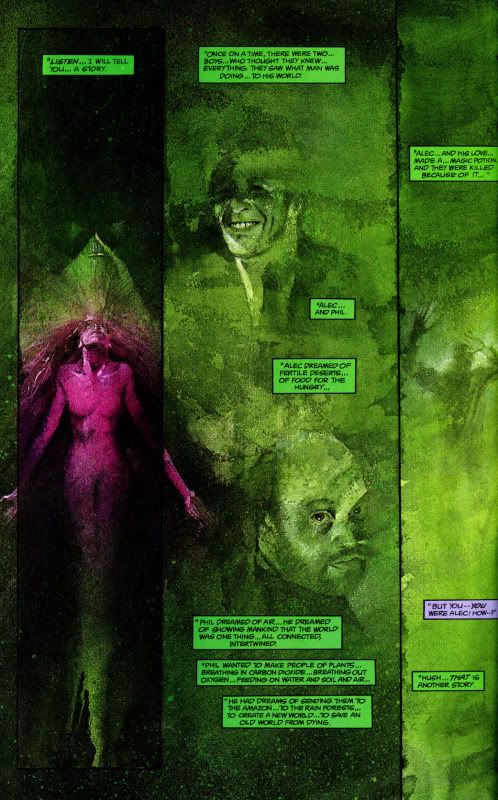
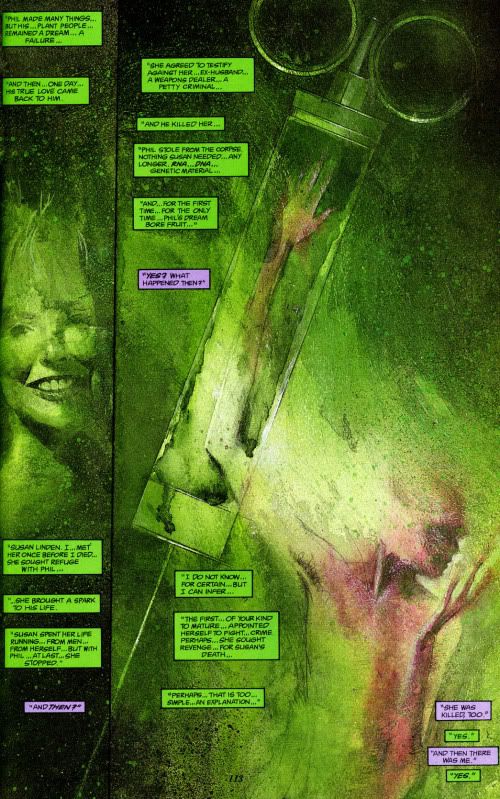
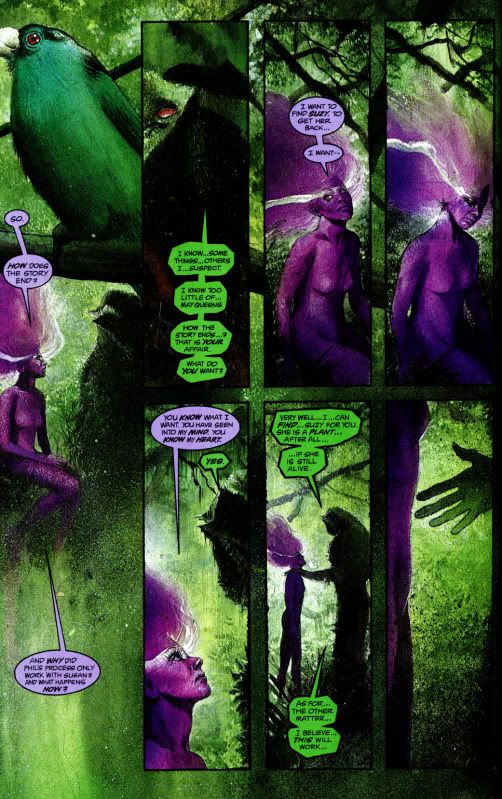
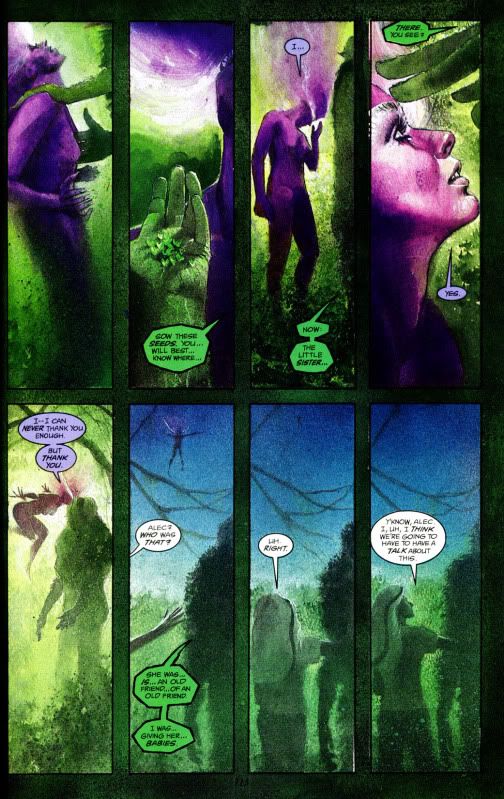
A bit awkward there with the wife, Alec. :)
Visually, one of my favorite McKean scenes, too.
Black Orchid finds her sister, and has come to some realizations, about herself, and about that woman in Arkham.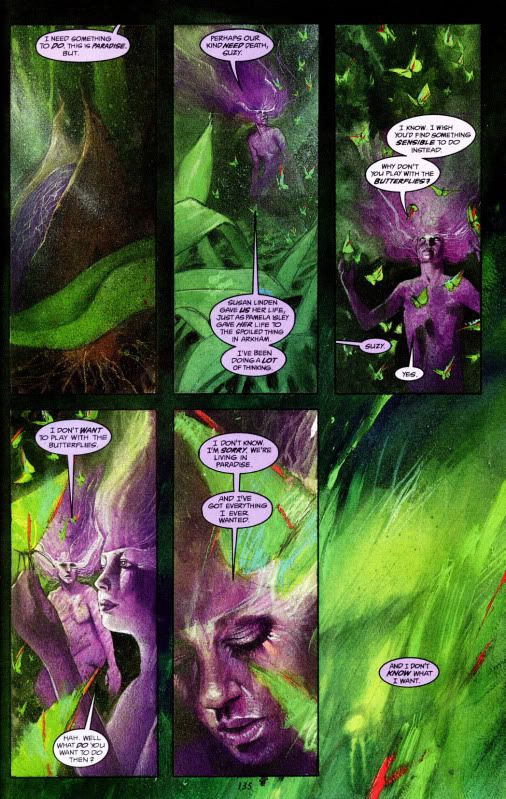
Of course, this didn't fit with the Silver Age origin of Ivy. So, Gaiman followed this up with Secret Origins #36, in a story taking place shortly before this one, when Ivy was in a normal prison.
An agent representing Beele Reve is visiting under the guise of a prison inspector. Upon meeting Ivy, he notices the room smells of flowers and that he's "drowning in her smile." The normally cool and professional agent is finding himself flustered. She seems very nice, though. 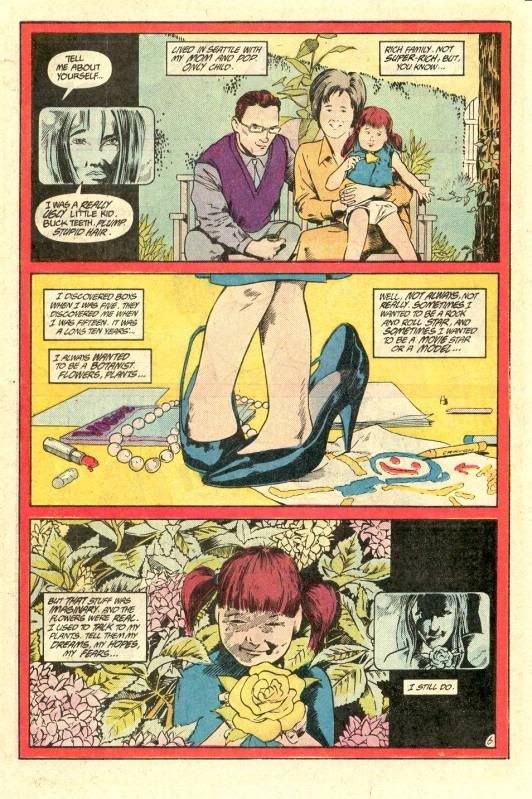
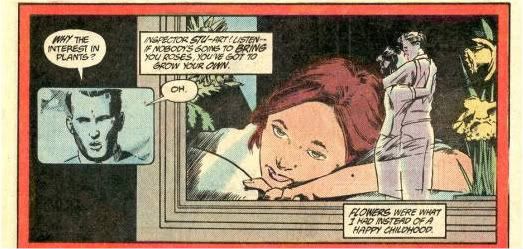
She describes how she went to college, and here is where her Silver Age origin is dismissed with an explanation that she made that up and didn't expect anyone to believe it. She continues...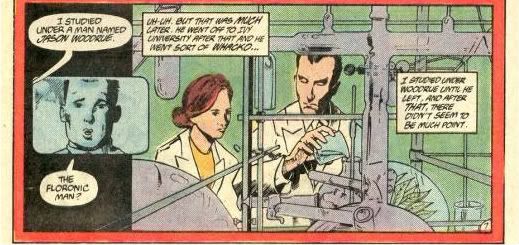
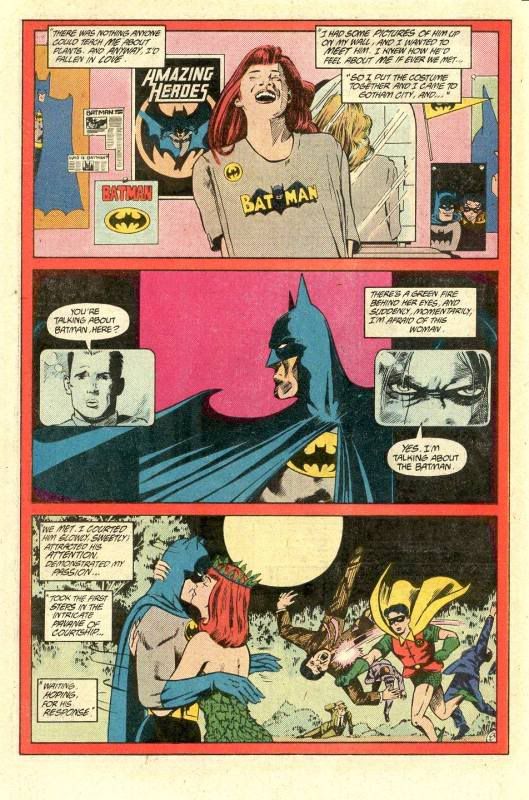
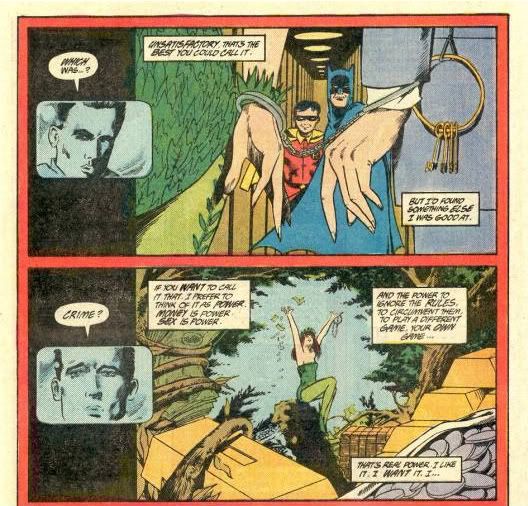
She catches herself, realizing she needs to be making a good impression. And, as usual, Dick objects whenever Bruce gets a girlfriend. :)
What Ivy says about freedom and power... That's a huge part of Selina's issues, and even a little of Harley's. Selina has always used it and acted on it.
The Beele Reve agent is having some problems, that night. He can't stop thinking about her, and is perpetually horny. He decides he needs to talk with her outside, away from the flower scented cell. The warden protests, but he pulls rank. She's very happy to get out of doors. He askes her why she's chosen a weed for her name. She replies that there are no such thing as weeds, that a weed is just a plant some human decided was growing in the wrong place. She's figured out he isn't a prison official, that he's representing someone else, so she stresses that she needs to get out of there.
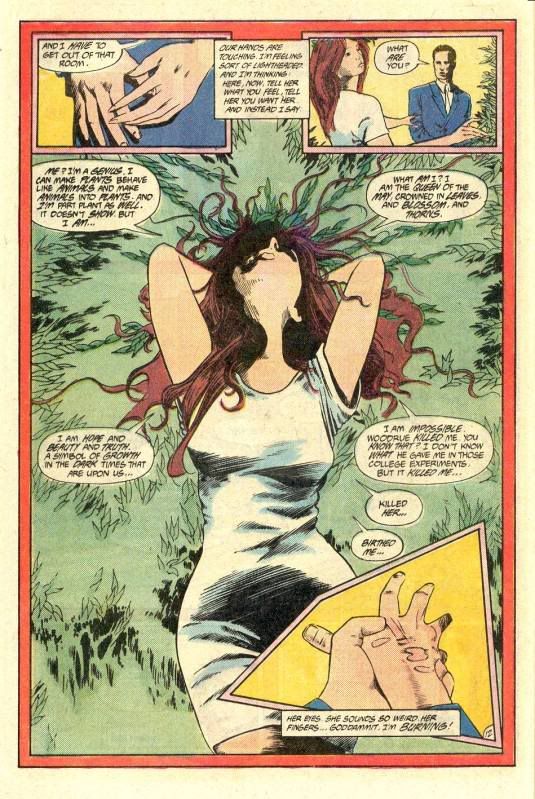
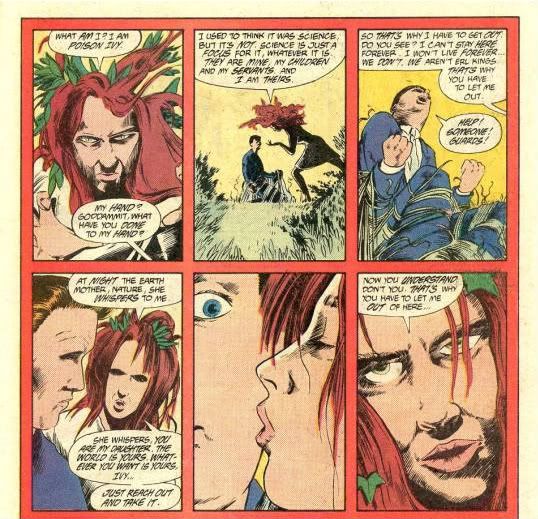
The agent has her transferred to Arkham, and she winds up in Suicide Squad, for a while.
But, as we saw from Black Orchid's observations and her discussion with Swamp Thing, Ivy is insane, but not really delusional. She's genuinely a human/plant hybrid with a connection to the Green. As we see in a flashback scene from the recent Joker's Asylum, by J. T. Grul and the soon to be Gotham City Sirens artist Guillem March (in which she's moved from feeding plants rats to larger animals), extreme empathy with plants can be wonderful, sometimes... but also very painful.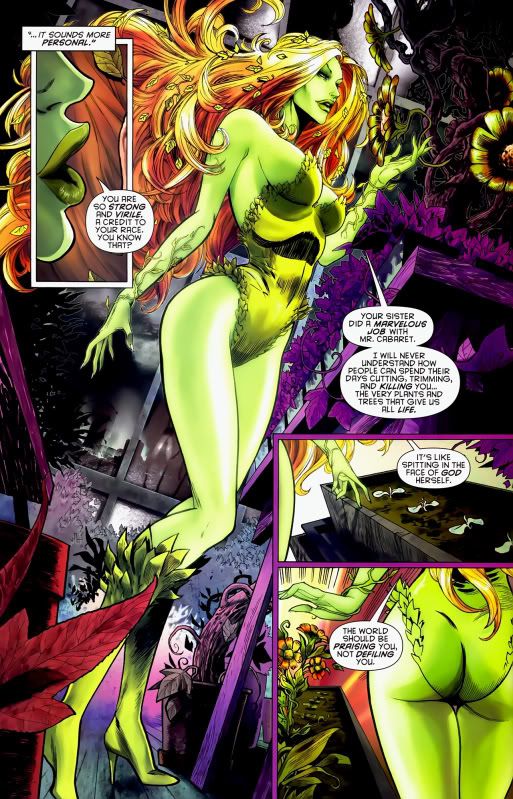
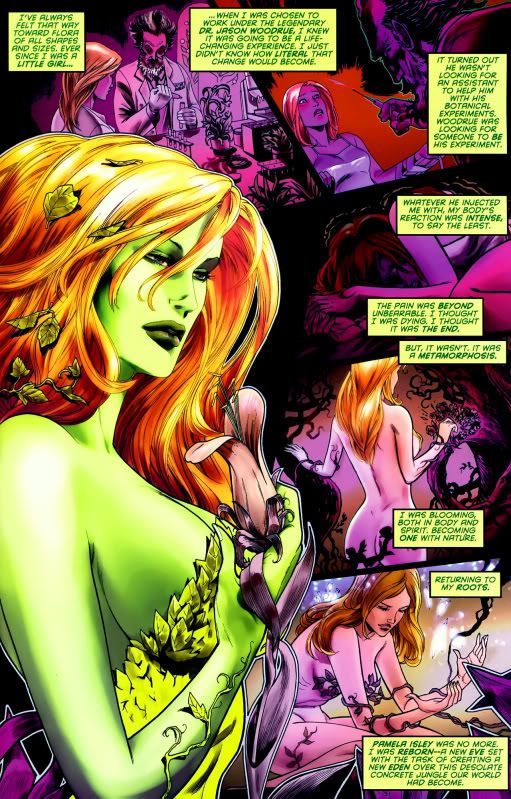
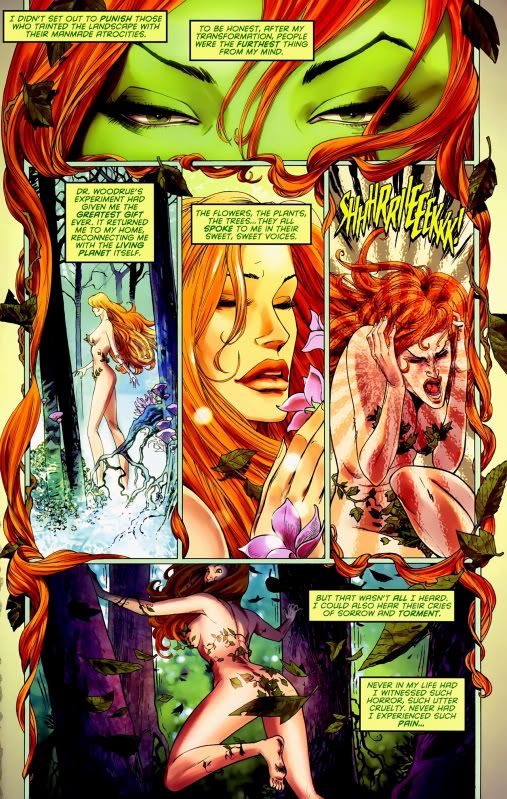

Even Alec Holland, the most together of these human/plant hybrids, these elemental beings, has had his moments of wanting the plants to overtake everything, even doing it to Gotham, once. What keeps him tied to humanity is the love he shares with his human wife, Abby. Ivy, noticeably, mellows when she has humans she genuinely cares about. Usually, she's Nature's Wrath. But, in Myth, the May Queen is a loving, maternal, goddess, which brings us to Greg Rucha, with Dan Jergens and Bill Sienkiewicz, and No Man's Land.
Gotham was wrecked by an earthquake, which led to the city being mostly evacuated and then cut off until it could be repaired. Problem was, everyone couldn't be evacuated, and Arkham's former inmates were taking what they could. Ivy took Robinson Park, and made it into Eden. Clayface payed a visit, seeking a business opportunity. He found her, and a lot of kids. 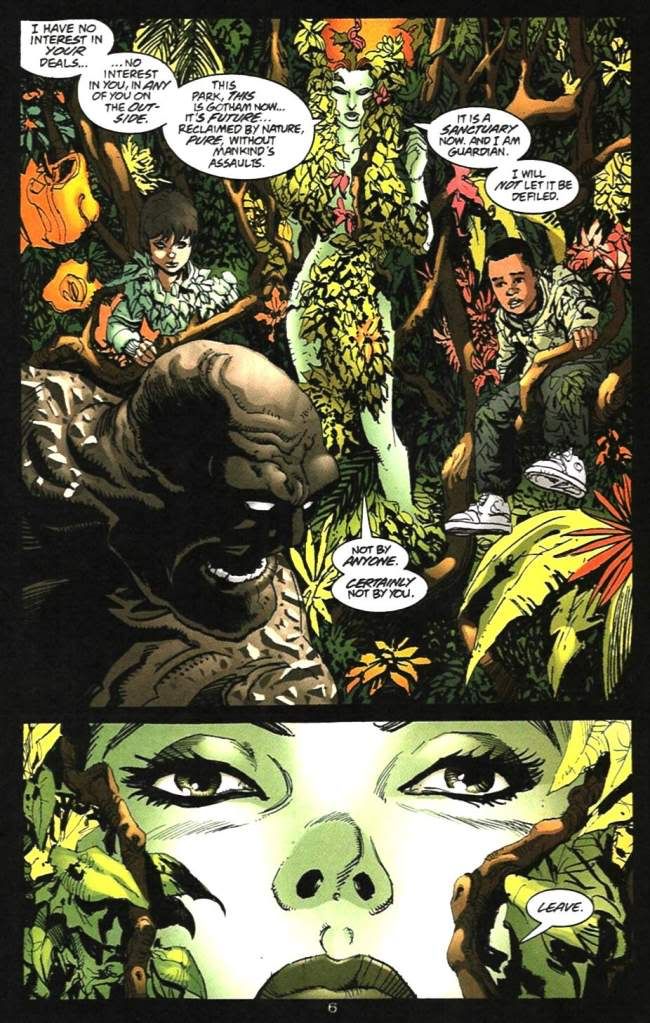
Clayface doesn't take no for an answer. Batman and Robin investigate, with Batman opening a secret passage to an underground base. How did Batman know about it, and who'd build an underground base under Robinson Park?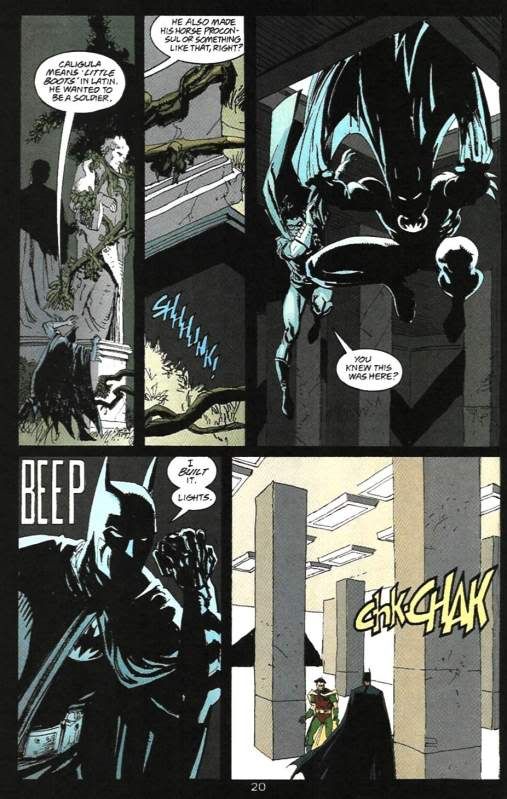
Oh, well, of course.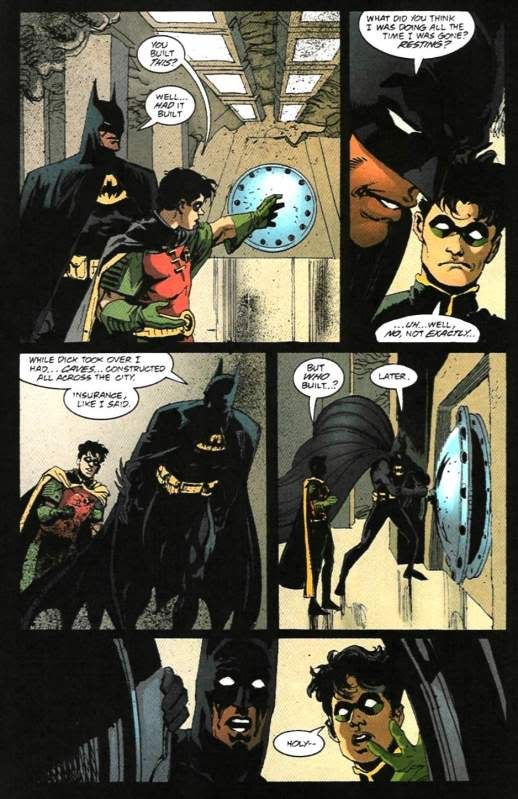
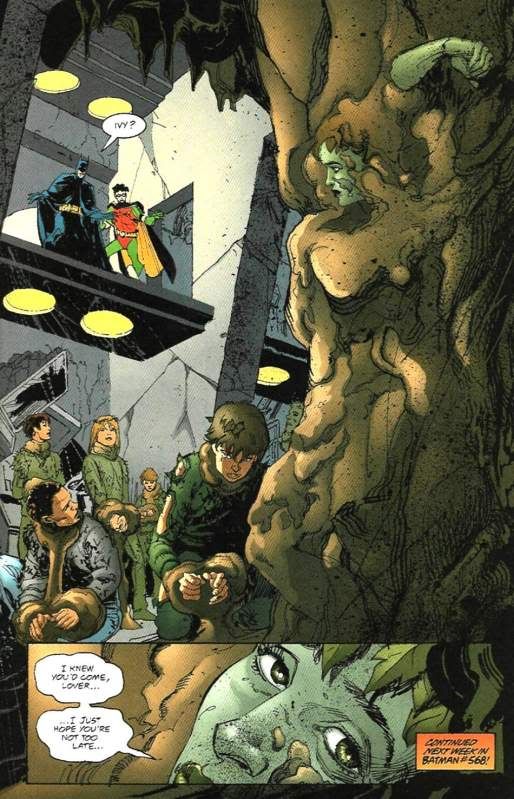
She wants his help, offering a box containing things he doesn't want in the wrong hands in exchange. He insists the kids aren't staying. She counters by asking who else will take care of them.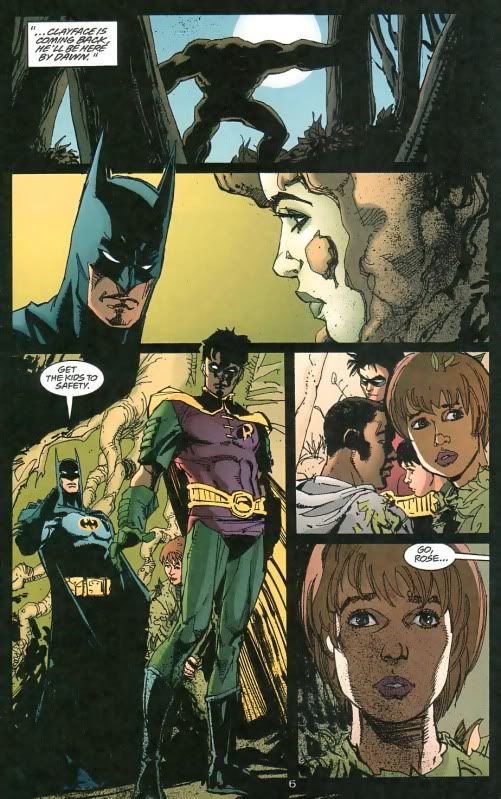
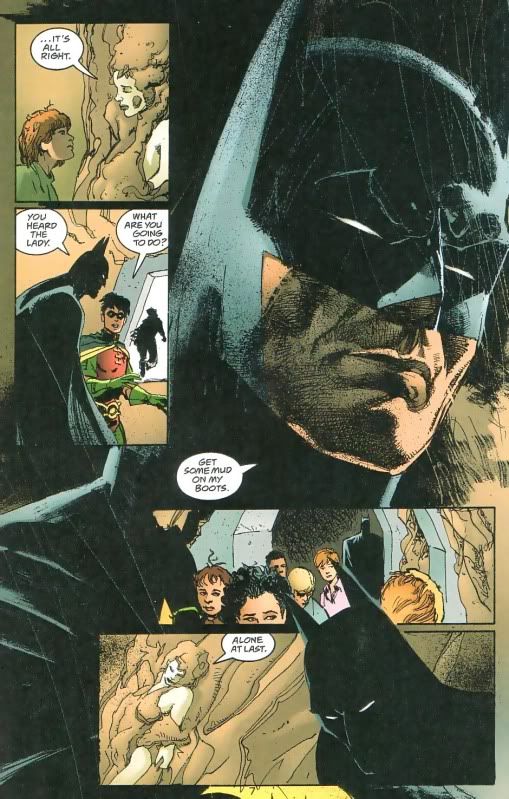
Batman knows he'll need her help against Clayface, but he's unable to free her. He asks what she'll need to regain her strength. She replies by asking him what does any plant need.
Meanwhile, above...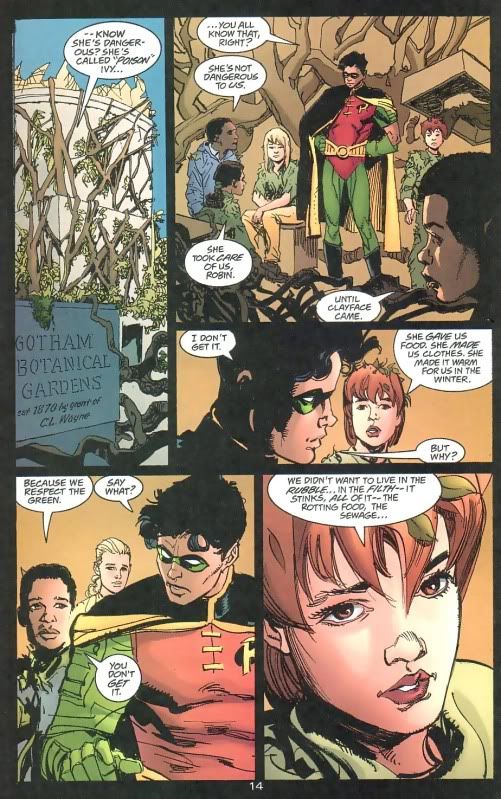
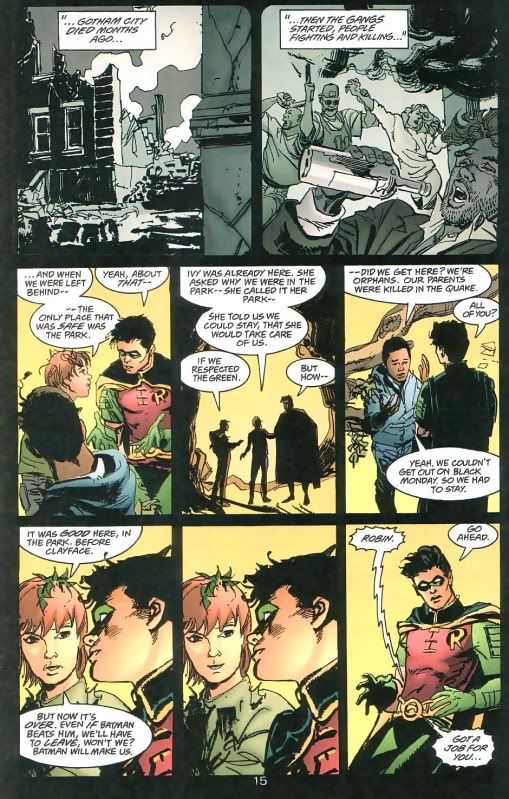
In addition to building that base, the Goddamn Batman stashed some major explosives in the park. Clayface arrives, and attacks. 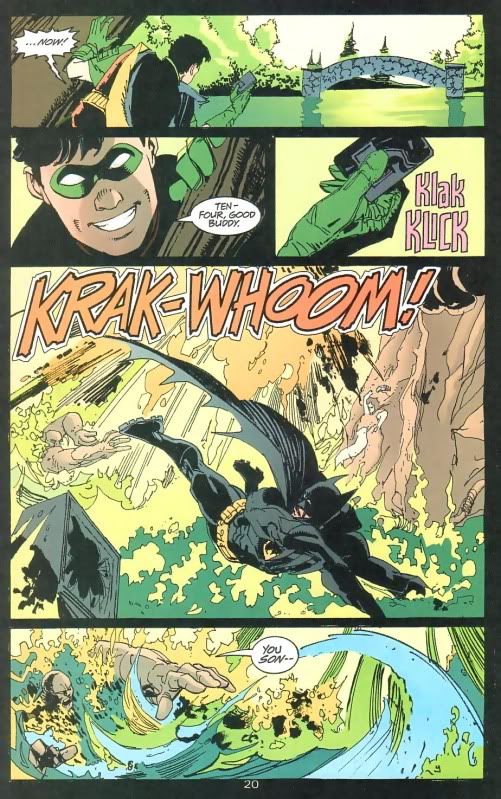
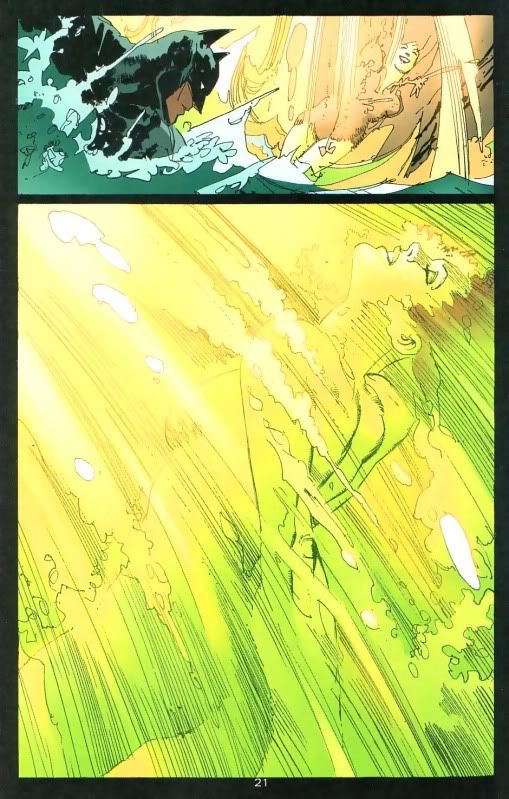
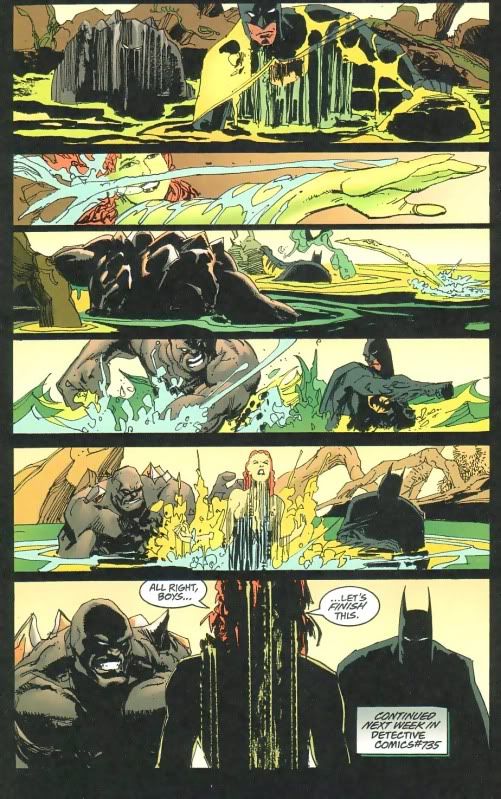
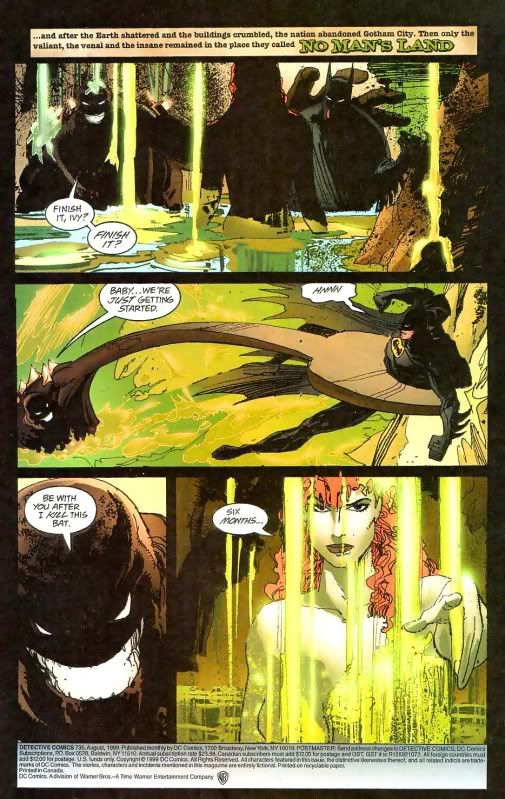
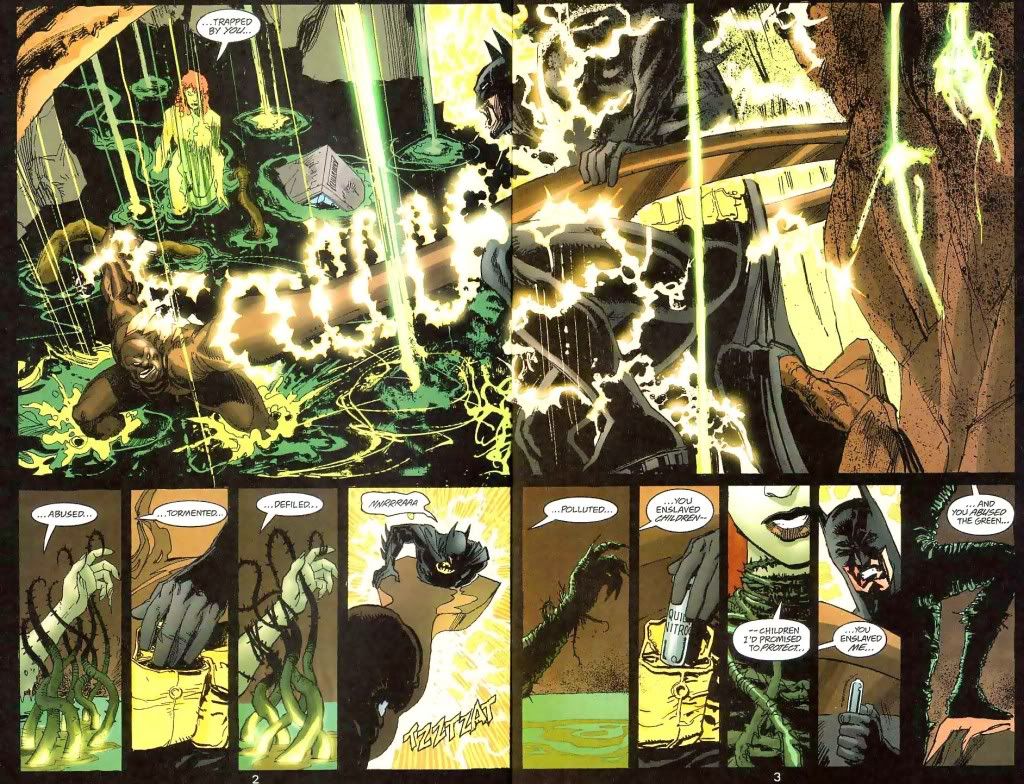
Wasn't that a smooth transition from one issue to the next? Lots to love about that sequence, I think. Her sheer joy when the sunlight and water hit, followed by a very wrathful goddess. You know Clayface is in very deep trouble.
Turns out that Clayface makes for very good soil. 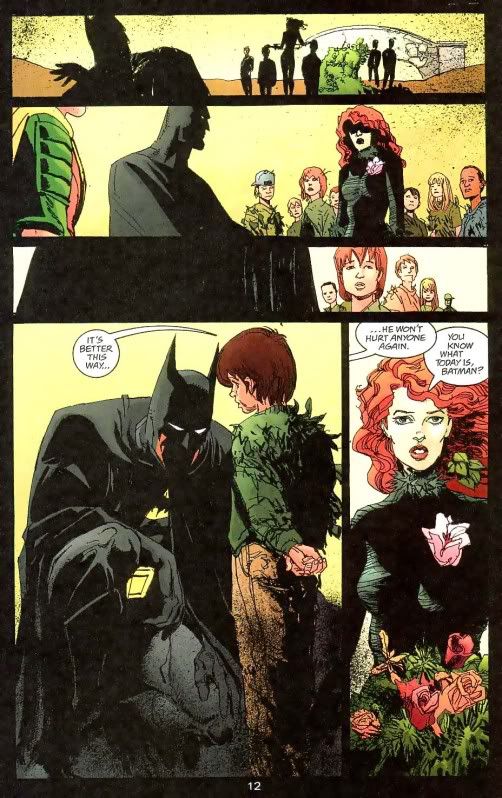
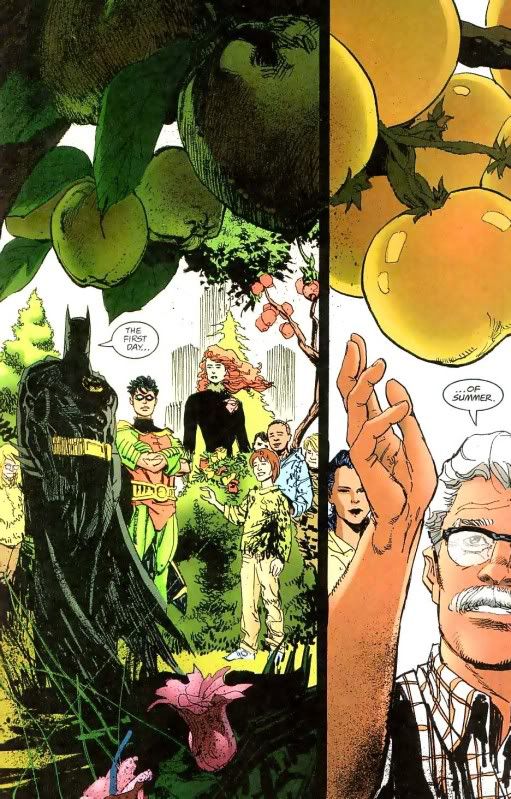

After a little spat over that...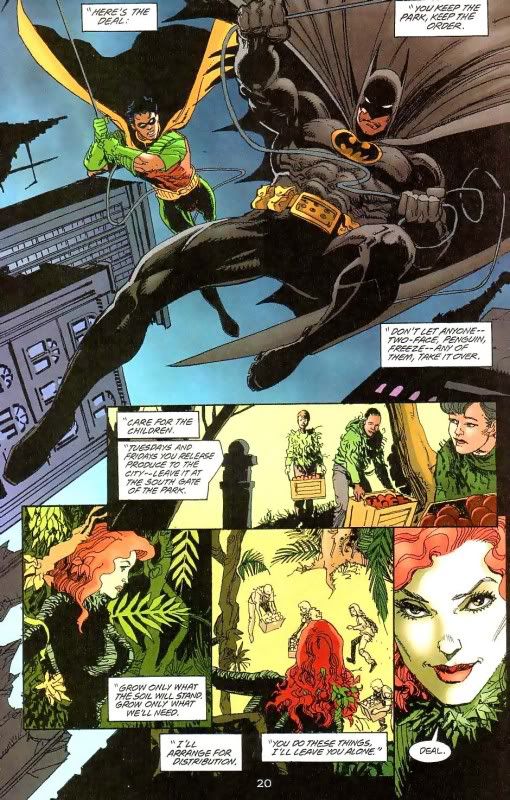
She then adopts someone else in need, a young former psychiatrist named Harleen Quinzel who'd just been nearly murdered by her psychotic boyfriend. Ivy turns her into a metahuman... But that's another story. As Harley Quinn, she'll become the person most associated with Ivy.
Eventually, the city was rebuilt enough to be reopened. It was decided that Ivy had to be evicted from the park. Ivy believes the park would be despoiled, again, and refuses to leave. The chemicals the Mayor decides to use to get her out will liquify all the plants in the park in addition to killing her and the children, but that's politicians for you.
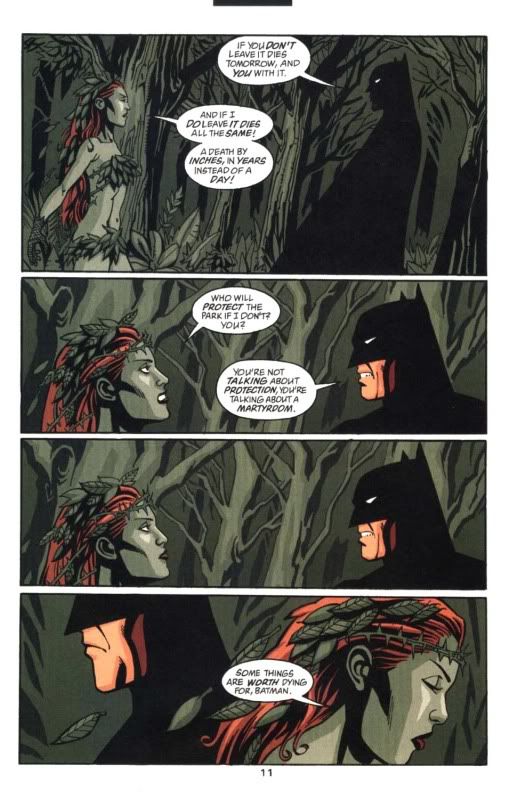
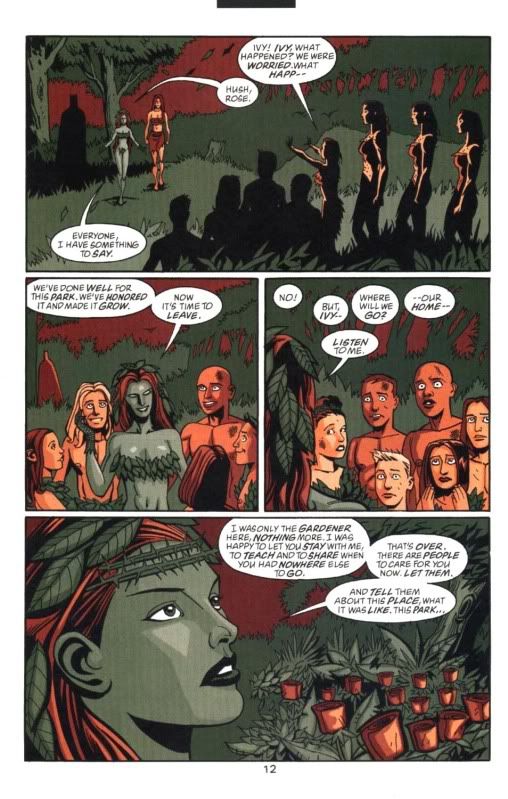
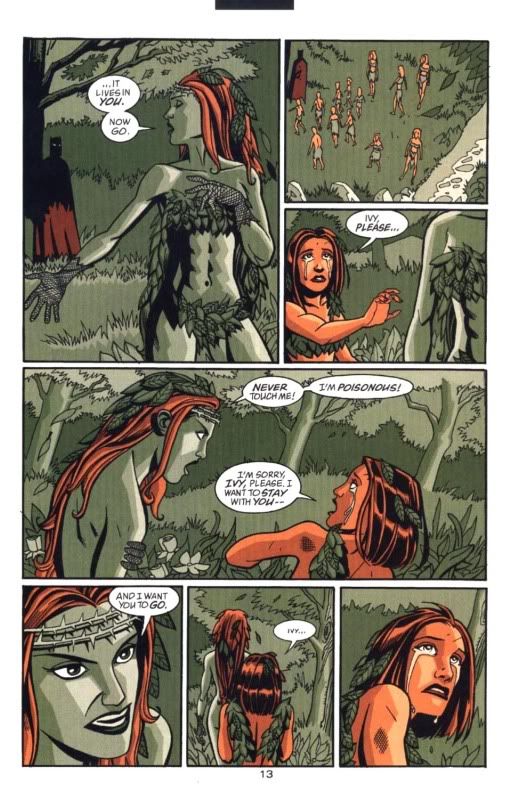
Once outside, the kids grab some tear gas and threaten to use it if they don't let them back in. Gordon allows this, as this is what Batman wanted, hoping that, since he couldn't talk Ivy out of martyring herself, maybe they could. Gordon gives Batman two hours.
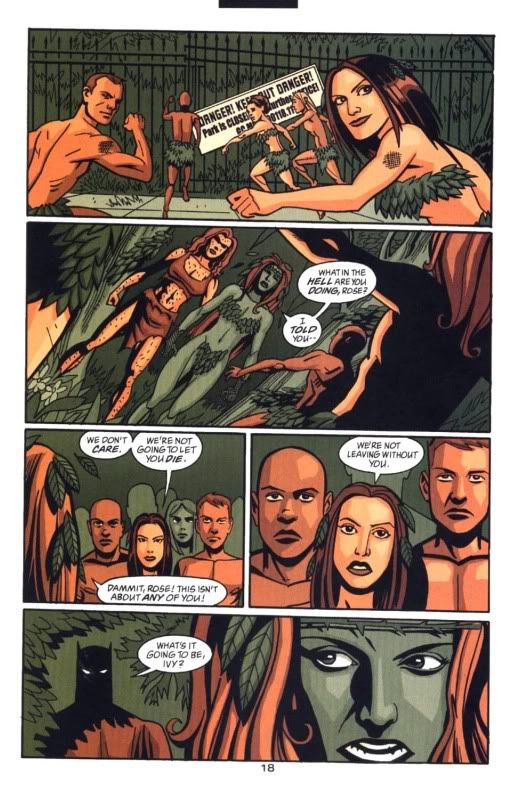
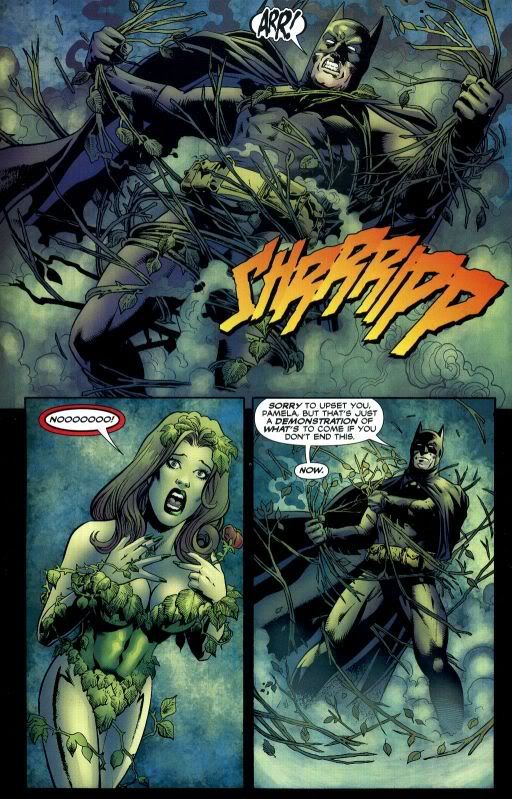
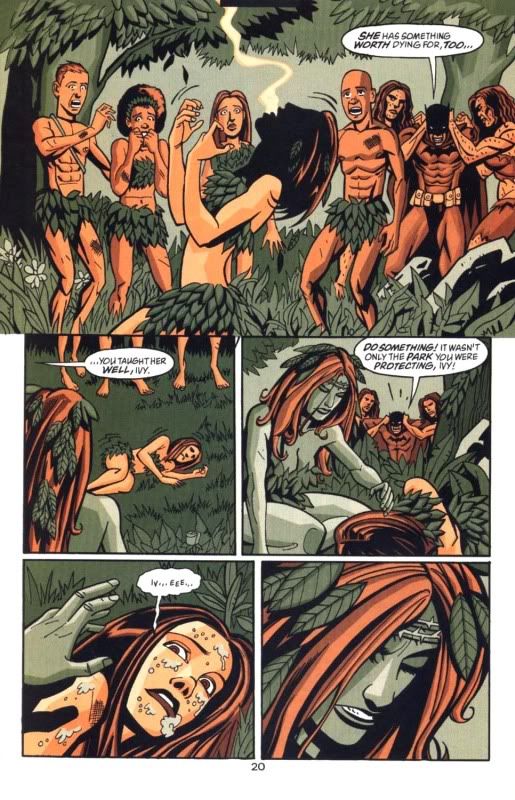
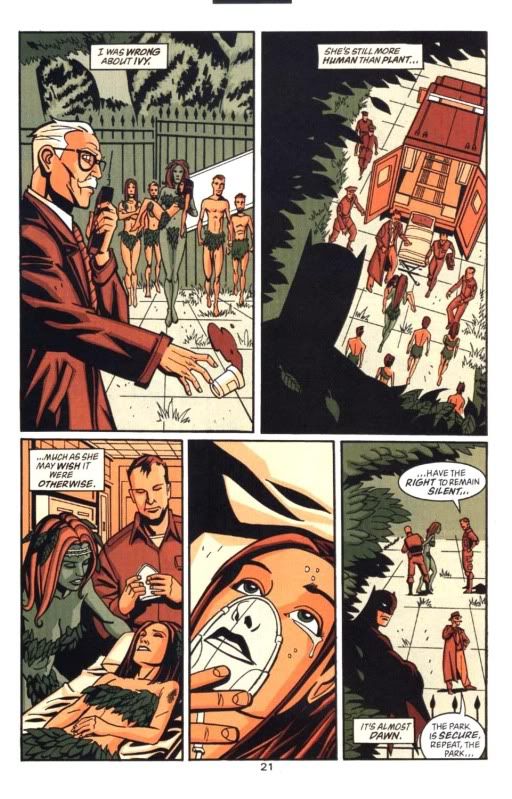
Ivy looks up the other person she cares about, protectively taking a bullet from the Joker meant for Harley. Well, Harley isn't going to put up with that, so the Joker gets a sound thrashing. The best friends do what they do best, being partners in crime and lesbian subtext. And wearing a Batgirl costume they have for some reason... Probably best not to ask... They even move to Metropolis for a while when Gotham gets too hot for them.
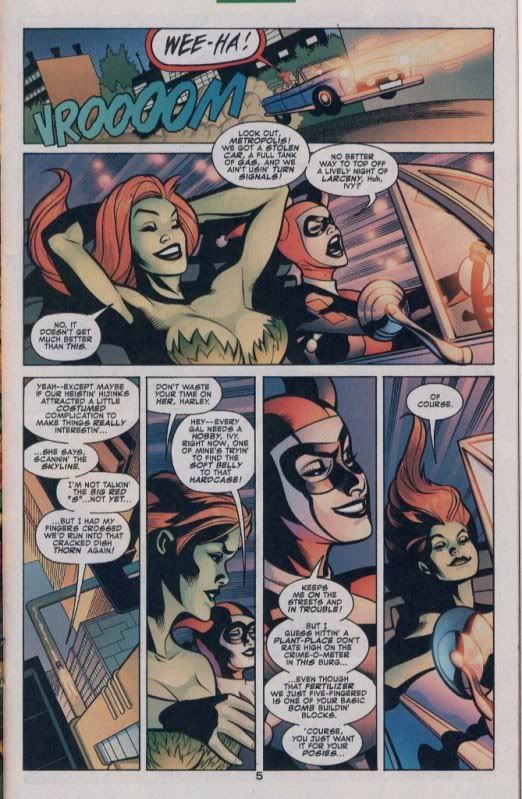

When they first met, Ivy told Harley she sympathised with having been used and betrayed by someone she trusted, referring to her experience with Woodrue. But, given her early feelings for Batman, she might also relate over obsessive love.
In Myth, the May Queen had a partner, Jack O' The Green, a noisy, practical joke playing Trickster. So, it makes sense that this May Queen was drawn to Harley.
Ivy will protect both the Green and those few humans she cares about with her life. But, if you're not someone she cares about, she'll happily turn you into plant food. That's something her new partners (though one of them is her old one) would strongly disapprove of. We'll see how that works out.
Scans from Black Orchid V1 #1-3, Secret Origins #36, Joker's Asylum: Poison Ivy, Shadow of the Bat #88, Batman #568, Detective Comics #735 & 752, and Harley Quinn #15. Each issue of Black Orchid was 48 pages.
